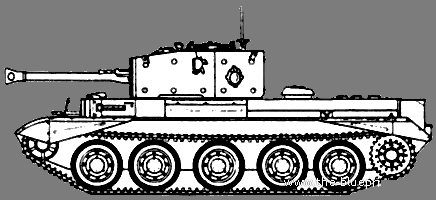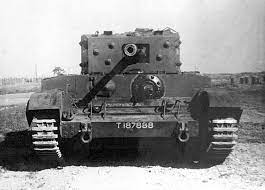Cromwell Tank Specifications

This is a interactive blueprint for you to learn more about the specifics of the Cromwell Tank
The Cromwell tank was a British cruiser tank used primarily during World War II. Known for its speed, mobility, and firepower, it played a crucial role in several key campaigns, particularly during the Allied push through Western Europe after D-Day. The tank was armed with a 75mm gun and was highly valued for its reliability and quick maneuvering on the battlefield, making it effective in both offensive and defensive operations.
Key Battles: Normandy (Operation Overlord, June 1944): The Cromwell was heavily involved in the invasion of Normandy, supporting the breakout from the beachheads and advancing through the hedgerows of Northern France. Operation Goodwood (July 1944): A major British offensive during the Battle of Normandy, where Cromwell tanks were used to support the assault on German positions and push the front lines. Battle of the Falaise Pocket (August 1944): Cromwell tanks helped encircle and defeat German forces, contributing to the destruction of the German Army in Normandy.

The British Cromwell Tank: Speed and Reliability in Combat
The Cromwell tank, officially known as the Cruiser Mk VIII, was a British medium tank that played a crucial role in World War II, particularly during the later stages of the war in Europe. Introduced in 1944, the Cromwell was designed to combine speed, mobility, and firepower, making it one of the most effective tanks of its class. Weighing around 30 tons, the Cromwell was armed with a 75mm main cannon and featured a highly reliable Rolls Royce engine that allowed it to achieve higher speeds than many of its peers. This mobility allowed the Cromwell to excel in fast-moving armored warfare, where it could outmaneuver and strike enemy forces with precision. The tank's design emphasized rapid movement and flexibility over heavy armor, which made it particularly useful in the fluid and fast-paced campaigns in Europe. While its armor was thinner than German tanks like the Tiger, its speed allowed it to flank and outmaneuver heavier tanks, especially when supported by infantry and artillery. The Cromwell was also relatively easy to maintain and repair, which allowed for better logistical support and greater operational availability. The Cromwell saw significant action in key campaigns such as the D-Day invasion, Operation Goodwood, and the Battle of the Falaise Pocket. It played an essential role in the Allied push through France and was instrumental in the destruction of the German defensive lines in Normandy. Though eventually superseded by more advanced designs like the Centurion, the Cromwell remained a vital component of British armored forces throughout the war. Today, it stands as a symbol of British ingenuity and the adaptability of Allied forces during World War II.
